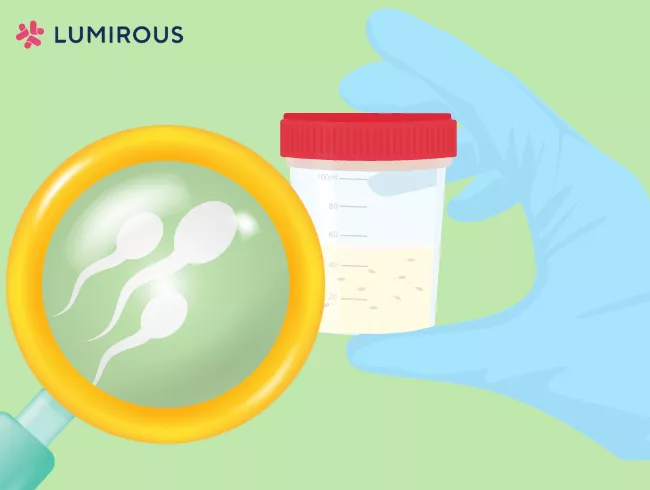Table of Contents

What is Azoospermia? |
Azoospermia is a medical term used to describe the condition when men have no sperm count at all in their ejaculate. It is one of the causes of infertility for men and can be diagnosed through a semen analysis test. In understanding the types of azoospermia, it is best to quickly review how the sperm travels through a man’s reproductive system. Sperm are produced in the testicles. From the testicles, sperm will travel through the reproductive tract and combine with the seminal duct fluid to form semen. Semen is the thick, white ejaculate that comes out through the penis during ejaculation. When one or none of the above processes fail to take place, there is a great chance that you may have azoospermia. |
Types of Azoospermia |
|||
| Obstructive Azoospermia | Non-obstructive Azoospermia | ||
|
Also known as post-testicular azoospermia, this condition is mainly caused by problems with ejaculation due to blockages in any part of the reproductive organs or ejaculation dysfunction such as retrograde ejaculation. Patients with this type of azoospermia can produce sperm as normal, but the sperm are unable to be transferred into the ejaculate.
|
This condition can be categorised into two types, pre-testicular azoospermia and testicular azoospermia. Pre-testicular azoospermia is mainly caused by hormonal disorders. In this case, the endocrine glands are not producing enough chemicals to trigger healthy sperm production and development. Testicular azoospermia, on the other hand, is mainly caused by the testes themselves. This condition could be due to abnormalities in the function or the structure of the testicles or the testes' inability to respond to the hormone released by the endocrine glands. Both types of non-obstructive azoospermia are the indicator that the patient is producing very low sperm or no sperm at all. |
||
Causes of Azoospermia |
|||
| Obstructive Azoospermia is caused by: | Non-obstructive Azoospermia is caused by: | ||
|
|
||
Symptoms of Azoospermia |
|||
|
Azoospermia is very tricky to detect without undergoing semen analysis testing. Nonetheless, the nearest possible sign of this condition is when a couple has been unsuccessful to conceive after more than a year of trying. Other possible symptoms of azoospermia to look out for are mostly related to hormonal imbalances or genetic chromosomal conditions. The symptoms may include:
All the same, you may still have azoospermia without experiencing any of the above symptoms. |
No worries, this is not the end of the road.
Azoospermia does sound like a scary and hopeless situation to be in, but this condition is definitely not the end of your parenthood dreams. It is best to consult your doctor and undergo the necessary diagnosis to correctly evaluate your condition, especially for couples who are trying for pregnancy. There are wide options of infertility treatments to overcome this condition, trust your doctor to help you with the best option.
Contact us for fertility support and consultation!
